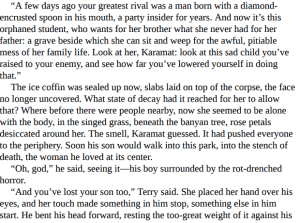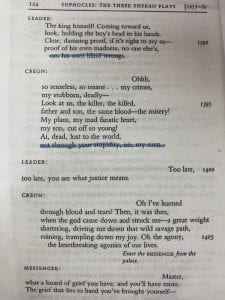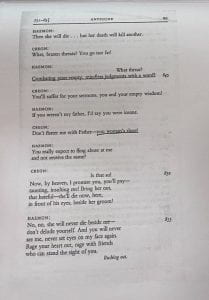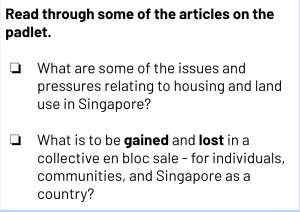Considering our recent texts of interest: the Greek play Antigone by Sophocles, the French play Antigone as well by Jean Anouillh and Home Fire by Kamila Shamsie; each of the texts can be compared and contrasted in a variety of ways.
One interesting point to focus on is the contexts in which each of the texts were produced and how they impacted the ultimate messages conveyed by the writers. For example, Sophocles wrote the original Antigone in 441 BC in ancient Greece during a period, ‘bookended by turmoil, from wars to revolts’ according to Court Theatre. Essentially, during this period, there was skepticism regarding the rule of potentially authoritarian leaders causing the political instability. This informed Sophocles’ depiction of Creon in his original playwright as an exploration of the psyche behind cruel leaders with a desire to establish grand control and create chaos.
On the other hand, Anouillh premiered his retelling of Antigone in 1944 around the time of the second world war. Anouillh’s intention behind his interpretation of Antigone was centered more on the French resistance against fascist leaders like Hitler; interestingly, the equivalent of the fascist leader in Anouillh’s Antigone, Creon, is depicted as more rational and less of a tyrant than in Sophocles’ version which is fascinating given the similar focus on exploration of almost dictatorships.
And then, in Shamsie’s version, there is grounding in the contemporary 21st century context exploring a more specific setting regarding British-Pakistanis. Shamsie is critical again of Karamat Lone who is a mirror of other depictions of Creon, but instead explores this through the lens of race and religious relations.
Returning again to Anouillh’s retelling as well, unlike in Shamsie and Sophocles’ depictions, he makes Antigone seem more foolish and naive unlike with Sophocles and Shamsie who portray the central character as a martyr and heroic figure. This comes back to the literary intentions of Anouillh given his historical context to somewhat critique those going against the French resistance unlike Sophocles and Shamsie who are more skeptical of the people in the positions of power causing instability and turmoil.
Coming to the idea of femininity, I find it interesting how in Sophocles’ version, women are matriarchal in the sense that the men feel their power over them whereas in Anouillh’s retelling, the women are painted less in this light. Shamsie’s retelling also adds an interesting spin to the narrative by exploring the implications of Aneeka’s relation to Eamonn in a contemporary world where women face slut-shaming. Shamsie’s incorporation of different text types within the novel like newspaper extracts powerfully calls forward the modern day connotations that sometimes are relevant to womanhood.








